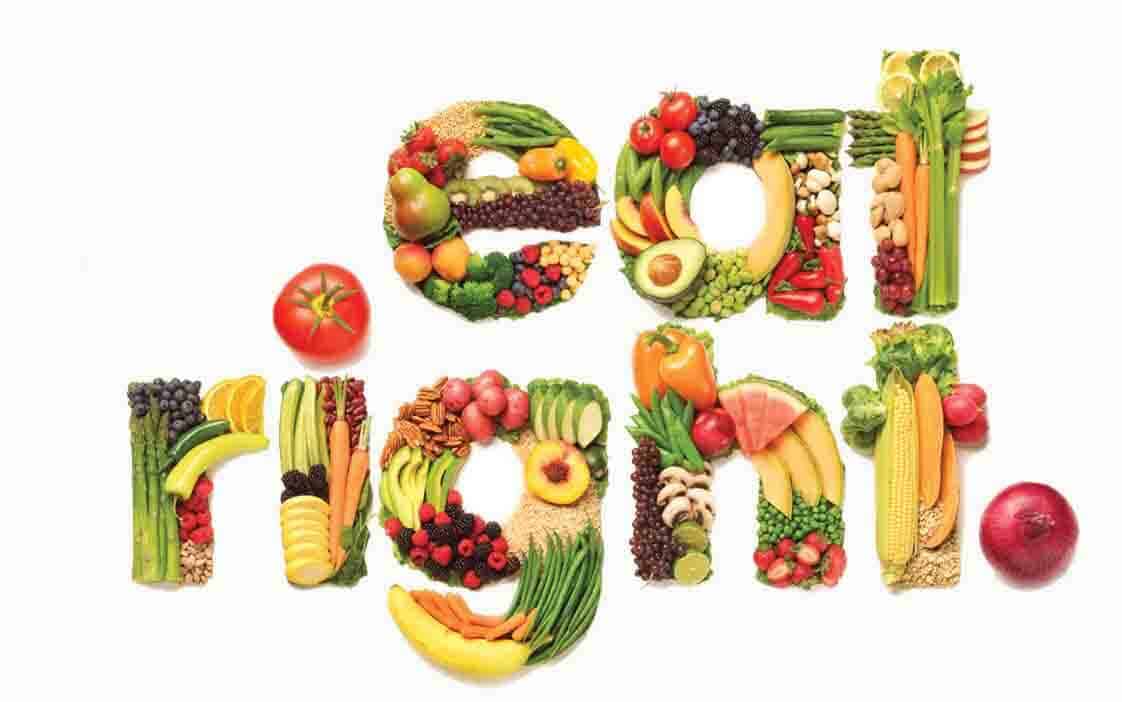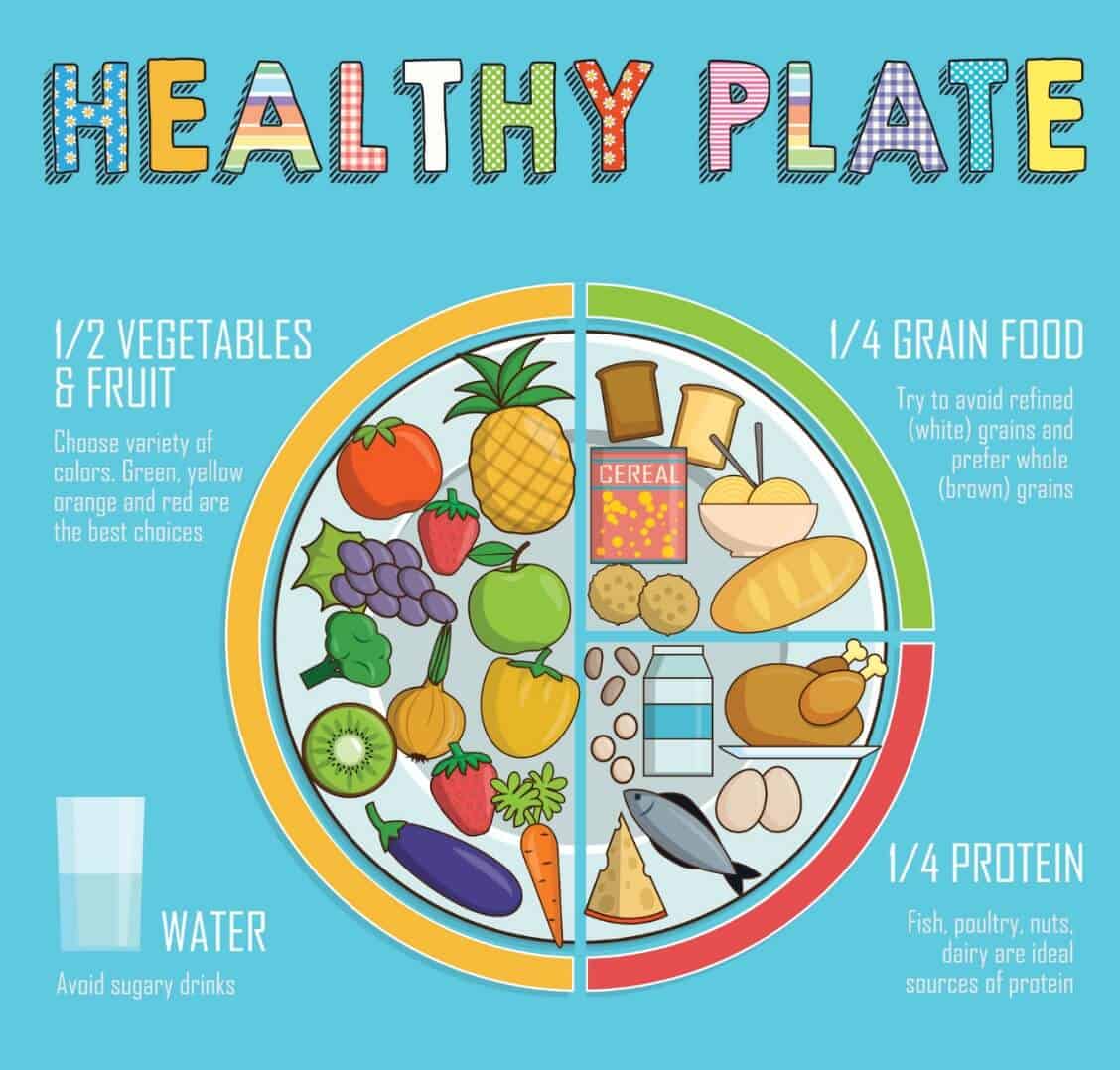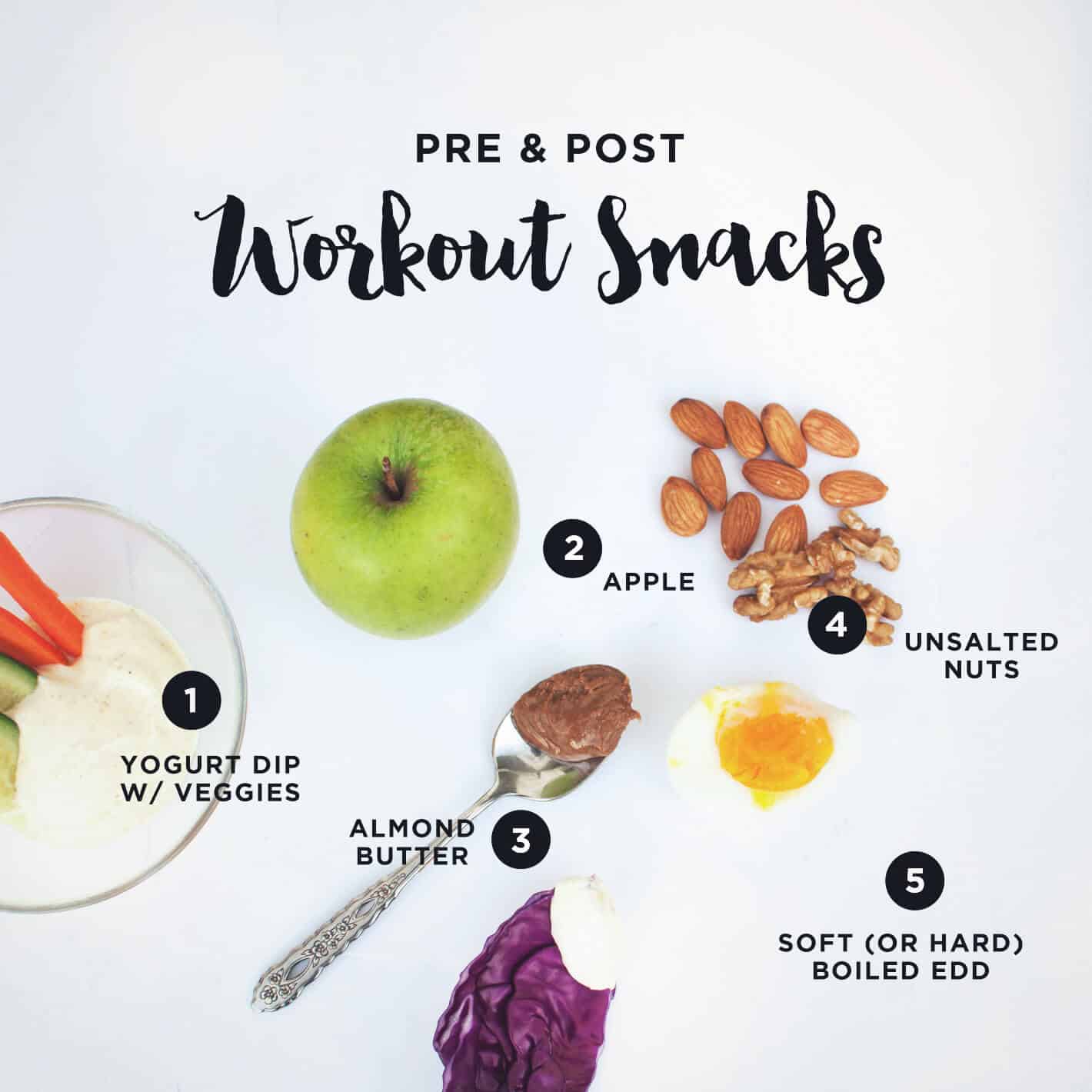Nutrition and healthy eating is a multi-layered approach to wellness.
Nourishment refers to the foods you eat to remain functioning.
Nutrition, on the other hand, is the positive health benefits you get from the food you eat daily.
The combination of nutrition and healthy eating involves more than merely putting some veggies on your plate or opting for an apple instead of a cookie as a snack between meals.
It’s a concept that involves the food you eat, the value those foods offer regarding what they can do for your body, and how much you eat at any given time.
It also includes the ingredients you use to cook and the combination of foods you consume during each full meal.
Healthy eating is one of those things that most people know is important. It’s not always easy to fine-tune your preferences.
According to MayoClinic, the subtler points of nutrition sometimes change as new nutrition and healthy eating articles reference further research and new studies.
So, how do you put together a nutrition and healthy eating plan that works best for you? Here’s what you need to know to achieve this goal.
To help you stick with your weight-loss goal, we’re all about working hard with healthy lifestyle changes. That’s where an app like Noom can come in handy.
 What Is a Nutrition and Healthy Eating Plan?
What Is a Nutrition and Healthy Eating Plan?
While the finer points of nutrition and healthy eating may sometimes change, the basics are still the same, so let’s start there.
Nutrition and healthy eating plan should include a colorful mix of foods. But why?
Because it’s the pigmentation of certain fruits and vegetables that play a role in how much nutritional value these foods offer.
Bright, colorful fruits are the ones that offer the highest nutritional level per serving.
With vegetables, it’s the green, leafy ones that tend to offer more nutrition per serving.
“When it comes to losing weight, I also suggest that people follow a plant-strong (or plant-exclusive if possible) diet, loading up their plates with fruits, vegetables, and whole grains and cutting meat either completely or limiting meat as much as possible. When you eat mainly plants, you don’t have to worry about counting calories, as you’re filling up on foods that are naturally low in calories. The surprise? You’ll probably find that you’re actually eating higher volumes of food, but because they’re lower in calories, you should naturally begin to lose,” states Karen Asp, Certified in Plant-Based Nutrition and leading journalist who specializes in health, fitness and nutrition.
All fruits and veggies offer some nutritional value, LiveStrong reports. And many of these foods provide well-documented health benefits.
But the ones you’ll want to focus on to create a healthy eating plan include:
- Broccoli
- Kale
- Blueberries
- Blackberries
- Raspberry
- Avocados
- Tomatoes
- Brussel sprouts
- Apples
But you need more than fruits and vegetables to obtain all of the nutrients you need to keep your bones, soft tissues, and vital organs healthy.
A healthy eating plan that provides the most nutrients is one that includes beneficial nutrients from multiple sources, including:
- Starchy foods (potatoes, bread, rice, or pasta)
- Dairy or dairy alternatives
- Protein (eggs, beans, lean meats)
- Unsaturated oils and spreads (in small amounts)
- Plenty of water (follow the eight, 8-ounces per day rule)
“Start your day with a big glass of water, and continue to hydrate with water throughout the day at meals and before meals with room temp or hot water with lemon. (Don’t drink your calories).Eat three meals a day, especially breakfast. One snack (if needed) between lunch and dinner, highest caloric meals before 2 pm, and no eating after 7 pm),” states Debbie Gisonni, Business Consultant, Life Advisor, Author, Speaker and Host.
What Is the Food Pyramid?
How Does it Affect Nutrition and Healthy Eating?
The MyPlate replaced the Food Guide Pyramid or Choose My Plate on June 2, 2011.
It’s meant to serve as a guide for how many servings you should have for each food group.
“Incorporating something from each food group provides a balanced, nutritious meal and makes creating a healthy plate easy. When we fuel our bodies with real food containing natural goodness, they perform and feel better,” states Lori Beasley, Brand Marketing Manager at Tolerant Foods.
You can assess the nutritional values of the foods you intake using the weight-loss app Noom. With an extensive food database, you’re bound to find the food, and proper portion sizes, via the app.
It gets specific to each food group, but to give you an idea, here are some of the highlights:
- The grain group allows for six-ounce equivalents or servings per day
- The vegetable group provides for 2 1/2 cups in total or five servings per day
- With fruits, the Department of Agricultural recommends four servings per day
- The recommendation with milk and dairy products is 3 cups per day in a variety of different colors
- An allotment of 100-300 discretionary calories are permitted each day to allow for fats and occasional treats
With portion size, the Department of Agricultural is just as precise. A lot of the recommendations are within the half-cup and full-cup range, although specific portion guidelines will depend on the type of food involved.
For example, the recommended portion size for grains is a one-half cup of cooked pasta and one cup of dry cereal.
The food pyramid is an excellent go-to guide for your nutrition and healthy eating plan.
If you’re not sure how many fruits and veggies or how much meat to include in your diet for the day.
You’ll find those answers by keeping the food pyramid guidelines in mind.
It’s also a handy reference tool you can use to determine if you are meeting your nutrition and healthy eating goals. You may have even heard people commonly talking about “the basic food groups.”
So, what are these? According to the US Department of Health and other government agencies, there are five primary food groups. They are as follows:
- Fruit
- Grains (breads, cereals, pastas, rice, etc.)
- Dairy products (e.g., yogurt, milk, cheese)
- Vegetables and legumes
- Lean meats, poultry, and fish
Proper Nutrition and Healthy Eating Habits
It’s entirely possible to eat foods that are considered healthy without getting sufficient nutrients, which is the purpose of paying attention to the food pyramid and food group guidelines.
Ideally, you want a combination of nutrients from various healthy foods you consume.
But how are you going to know if you get the right nutrients in each meal? With Noom, nutritionists manage the food database, so you know you’re getting the most accurate information possible.
The best way to optimize your nutrition in healthy eating habits you follow is to have a good idea of what should be on your nutritional and healthy eating to-do list.
While there may be some special allowances for underlying health issues.
“To lose and manage weight, it requires more than just learning about the calories in food and what your body needs. You need to learn how to program yourself and master that part of yourself that manufactures your desires, urges, habits and feelings,” states William Anderson, LMHC, Founder of The Anderson Method.
According to 12WBT.com, the following nutrition and healthy eating habits are ones you’ll want to make part of your everyday routine.
- Eating unprocessed foods
- Opting for whole grains instead of refined ones
- Adopting healthy cooking habits (e.g., steaming meats and veggies and avoiding deep-frying)
- Keeping portion sizes reasonable
- Maintaining a food diary to see how well you are sticking to your nutrition and healthy eating plan
- Eating responsibly in social situations
- Making smart food choices when grocery shopping
“It’s not always the food item but rather the way it’s consumed and the portion which is consumed PLUS the fact that we’re just not moving enough,” states Anita Mirchandani, MS, RD, CDN.
 What Nutrition and Healthy Eating Plan Works?
What Nutrition and Healthy Eating Plan Works?
As mentioned above, a personalized nutrition and healthy eating plan will include modifications for any existing health issues.
Part of your nutrition and healthy eating plan involves your daily caloric intake.
“Even though some sources recommended that women should consume about 2,000 calories a day, many women would gain weight if they consumed that much. Calorie intake needs truly should be individualized. Small and/or older women need far fewer calories. Young/very active women can need more than 2,000,” states Christine Palumbo, RDN, FAND.
The other factor in the equation is the food those calories come from, which takes us back to the food pyramid. You could easily reach 2,000 calories a day eating sugary snacks and fried foods, but neither one of those choices is very nutritious.
You could also fill yourself up with fruits and veggies, but wouldn’t be getting all the nutrients you need. The same is true if you primarily ate protein or opted for a diet that cut out carbs altogether.
This is why it’s not a good idea to follow diets that eliminate food groups. You may lose weight. But, you’ll also be missing out on some essential nutrients. Here are some nutrition and healthy eating tips to keep in mind for your nutrition and healthy eating plan:
Make about a third of the foods you eat starchy carbohydrates.
Whole grain starchy carbs are better for you. Put more nutrition in healthy eating choices with carbs by being careful with sauces and other extras.
Eat five portions of fruits and veggies each day.
Ideally, you should opt for a variety of fruits and veggies so you’ll get a better mix of vitamins and other essential nutrients.
Make fish part of your regular diet.
Two portions of fish a week is a good goal to set for your nutrition and healthy eating plan.
Minimize saturated fat intake.
According to NHS, your body needs some fat from the foods you eat.
For men, the recommended limit is no more than 30 grams per day. For women, it’s 20 grams.
Cut down on sugar consumption: An occasional sugary treat is fine, but your nutrition and healthy eating plan shouldn’t include sugary foods or beverages.
Portion control is extremely important to your weight-loss success, but you may need help to speed up the tracking process. With the huge database of food available with Noom, which is reviewed and managed by nutritionists, you can track anything and everything you eat in seconds.
Why Is Nutrition and Healthy Eating Important?
Your body needs vitamins and minerals, protein, and energy to function and grow. This is the underlying reason why nutrition and healthy eating are important.
When your body has the right blend of nutrients, it’s easier to ward off irregular molecules known as free radicals that can damage healthy cells.
If you’re not paying attention to the foods you eat, it’s more difficult for your body to find a natural balance with what’s consumed, what’s absorbed, what’s burned off naturally, and what’s stored as fat.
When this balance is off, you’re at an increased risk of experiencing any number of health-related issues.
“No matter where you are with your eating and lifestyle habits, there is always room for improvement. Weight management and healthy living are lifelong endeavors akin to marathons, not short sprints. Making a single change in the direction of health can have a ripple effect that can enhance your well-being across the board,” states Nutritionist & Registered Pharmacist Barbara Mendez R.Ph. MS.
Nutrition and Healthy Eating at Home
Not everyone is a gourmet cook.
But, the great thing about cooking is that you don’t have to be an expert to make food for yourself or your family that’s healthy and nutritious.
Nutrition and healthy eating recipes are readily available online.
There are also plenty of useful tutorials and how-to videos that can make preparing and cook a home-cooked meal less stressful and more enjoyable.
Cooking at home can make it easier to meet your nutrition and heating eating goals because you’ll have more control over the ingredients you use.
You’ll also be able to choose nutrition and healthy eating recipes tailored to your specific health needs.
Make your life easier by staying organized; this is meant to simplify your life and be more efficient, so keeping a daily planner and practicing proper time management are tools that can help combat stress.
“Cozi, makes it easy to transfer recipe ingredients to your grocery list—great for when you’re menu planning for the week or just scrambling to pick up ingredients for dinner tonight,” says Kati Chevaux from Cozi Family Organizer.
Certain spices can also have a positive effect on your health. According to EatingWell, spices and herbs with proven nutritional and health benefits include:
- Chili peppers
- Garlic
- Sage
- Parsley
- Turmeric
- Cinnamon
Another reason to cook at home regularly is the ability to control portion sizes better.
When you need help with food tracking and portion sizes, weight-loss apps like Noom work wonders.
Restaurants often serve food in more substantial portions as part of an effort to encourage loyalty and keep customers happy.
It’s also more challenging to be mindful of your portions in social settings. This doesn’t mean you have to stop socializing.
“Tis the season for celebrations – weddings, graduations, anniversaries and all the summer events that tend to get us in diet trouble. Before you go, create a plan for yourself and stay conscious of what you’re putting on your plate. Remember, it’s not the Last Supper! Go for the exceptional food that you can’t get just anytime. For example, steer clear of potato chips, french fries or run-of-the-mill desserts. Enjoy small tastes of what you really want. Sip water throughout the event. Eat slowly and socialize!” shares Christine M. Palumbo, MBA, RDN, FAND.
It just means you should get an idea of what a healthy portion size should be and keep that in mind with any meal you eat.
Healthy Eating Facts
One of the more compelling of the nutrition and healthy eating facts is the way that portion size can affect how much you eat and how much nutritional value you get from each meal.
According to Health, it only stands to reason that if you are either serving yourself a more significant portion or eating out and unintentionally consuming more substantial portions, that you will have a more difficult time maintaining the right nutritional balance.
In a study involving more than 300 oversight people, nearly 40 percent of the subjects who practiced portion control for two years lost around five percent of their excess body weight.
As for how to teach yourself how to choose the right portion of nutritious foods to put on your plate.
Imagine there’s a plate on a table in front of you prepare to pick and choose what you want to have for lunch from a buffet that includes a variety of options.
Fill about a quarter of your plate with lean proteins. Another quarter would have carbs from whole grain foods or low GI (glycemic index) foods (below 55).
The remainder of your plate should be populated by vegetables or by a salad.
For dinner, you would eat a little less than what you had lunch, but you would still strive to have the same mix of foods on your plate.
Should You Consider a Nutrition and Healthy Eating Course?
There’s a lot of nutrition and healthy eating information you can easily find online or from reading this article.
Still, it’s not always easy to figure out how to apply your knowledge of nutrition and healthy eating to your daily life.
Such courses may be available locally within your community or at your local hospital.
If you can’t find a course within your area, you may benefit from an online nutrition and healthy eating course.
Nutrition and healthy eating information typically covered in courses include:
- How foods you eat function within your body
- The connection between diet and nutrition
- The importance of combining nutrition and healthy eating habits and exercise
- An explanation of the role of weight management and nutrition in your life cycle
- How to optimize performance with sports with the right approach to nutrition and healthy eating
In addition to healthy eating programs, apps like Noom work to connect the user with personalized meal plans, human coaching, and one-on-one support so you stick with your changes long term.
Nutrition and Healthy Eating for Kids
The facts about nutrition and healthy eating is something anyone can learn at any age.
One way to help your kids learn the basics of healthy eating is with nutrition and healthy eating worksheets.
You can find nutrition and healthy eating worksheets you can conveniently download online for your children.
Some websites combine nutrition and healthy eating articles written with kids in mind.
They also include fun nutrition and healthy eating facts and interactive games, making it easy to understand.
The information includes:
- How to correctly fill up a plate with healthy foods
- How the right nutrition and healthy eating choices can give you more energy
- Why nutrition and healthy eating habits and exercise are important
Benefits of Eating Healthy
We all need some motivation now and then. As an inspiration, know that there are tons of benefits of eating healthy.
You may get the added personal push you need from quotes focused on nutrition and healthy eating.
A healthy outside starts from the inside. – Robert Urich
Pay the farmer or pay the hospital. – Birke Baehr
You don’t have to cook fancy or complicated masterpieces—just good food with fresh ingredients. – Julia Child
Now that you know some of the benefits of nutrition and healthy eating, here are additional tips to keep in mind.
Realize that you don’t have to make several changes to your eating habits all at once.
Even little adjustments can have a significant impact on your overall health and well-being.
Plus, if you change too much at once, you’re more likely to go back to your regular eating habits and patterns.
If you make smaller changes over time, you’re more likely to develop better eating and nutrition habits.
Consider the following tips and check out a weight-loss app like Noom to keep track of your sodium intake.
Cut down on the salt
According to the American Heart Association, Americans eat about twice the amount of salt that’s recommended.
Stay away from processed foods to cut your sodium intake
Americans get nearly 80 percent of their sodium intake from processed foods. If you can’t avoid all processed foods, get into the habit of reading labels and opt for lower sodium choices.
Don’t skip breakfast
According to MensFitness, studies show that skipping breakfast may negatively affect your mood and energy level.
Listen to your doctor
Sure, you can always take a healthy eating and nutrition course to learn the basics of nutrition, but your doctor should be able to steer you towards choices that are more specific to your health needs.
Nutrition and Healthy Eating and Exercise
There’s no denying the importance of nutrition and healthy eating. But diet alone will not keep all the parts of your body as healthy and functional as possible.
It’s equally essential to make an effort to get regular exercise. Part of the reason for this because it’s exercise and regular movement that helps you burn calories.
As for creating a healthy eating, nutrition, and exercise plan that works best for you, realize that there is no one-size-approach here.
Your nutritional needs will be different if you are in your 20s than if you are over the age of sixty.
B-12 isn’t absorbed as well when you are older because there is less acid in your stomach to break down this vitamin.
You will also want to choose foods that at higher in vitamin D and calcium content as you get older to prevent bone loss.
Additional Benefits of Nutrition and Healthy Eating and Exercise
With exercise, strive to get about 20-30 minutes of exercise per day.
The type of exercise you enjoy can be adjusted based on what’s comfortable and convenient for you.
You may benefit more from water-based exercise. Moreover, it’s a gentler form of exercise like yoga.
With the healthy eating part of the plan, gravitate towards eating patterns, you will likely be able to stick with.
Exercise is linked to diet in several ways. Here are some of them:
- Getting regular exercise increases the rate at which you burn calories
- If you’re at a healthy weight, aerobic and anaerobic exercise may suppress your appetite by altering the hormones ghrelin and peptide YY
- With regular exercise as part of your nutrition and healthy eating plan, you are more likely to maintain within a normal weight range
- Essentially, nutrition and healthy eating habits and exercise are all important because your body needs the energy to carry out its daily movements.
Additionally, if your main focus is just on the foods you eat, it will be more challenging to stay within a healthy weight range.
Even if you are at a point where you can seemingly “eat anything you want,” your metabolism will naturally change over time, making it more challenging to rely solely on the foods you eat to maintain your optimal weight, according to WebMD.
If you have healthy eating habits in place, you will be able to make adjustments over time as your body’s nutritional needs change.
Bottom Line on Nutrition and Healthy Eating
Paying attention to nutrition and healthy eating habits. Moreover, it isn’t the same as dieting to shed unwanted pounds.
Being mindful of the importance of nutrition and healthy eating means that you will be consistently making choices that are good for your overall health.
While your weight is part of your health, it’s not the only thing.
Finding a healthy eating nutrition and exercise plan that works for you may minimize your risk of developing certain diseases.
Exercise is also what helps you burn calories and productively use the energy you get from the foods you eat.
If you’re not sure how to fine-tune your nutrition and healthy eating plan, speak with your doctor or possibly take a nutrition and healthy eating course.
Nutrition and Healthy Eating – What You NEED to Know! Questions & Answers
- Recent:
Yes, it is possible to develop and maintain a healthy eating plan while on a budget and busy schedule. The key is to plan ahead. Make sure to buy groceries in bulk when you can as this will save you money in the long run. Also, try to make simple meals that are packed with nutrition like soups and stews. Additionally, freezing food helps them last longer, so consider making large batches of food that can be frozen for future meals. Finally, focus on getting the most bang for your buck by incorporating ingredients like beans, grains, vegetables and fruit into your meals as these are usually much cheaper than meats or dairy products.

Summer Banks has researched over 5000 weight-loss programs, pills, shakes and diet plans. Previously, she managed 15 supplement brands, worked with professionals in the weight loss industry and completed coursework in nutrition at Stanford University.

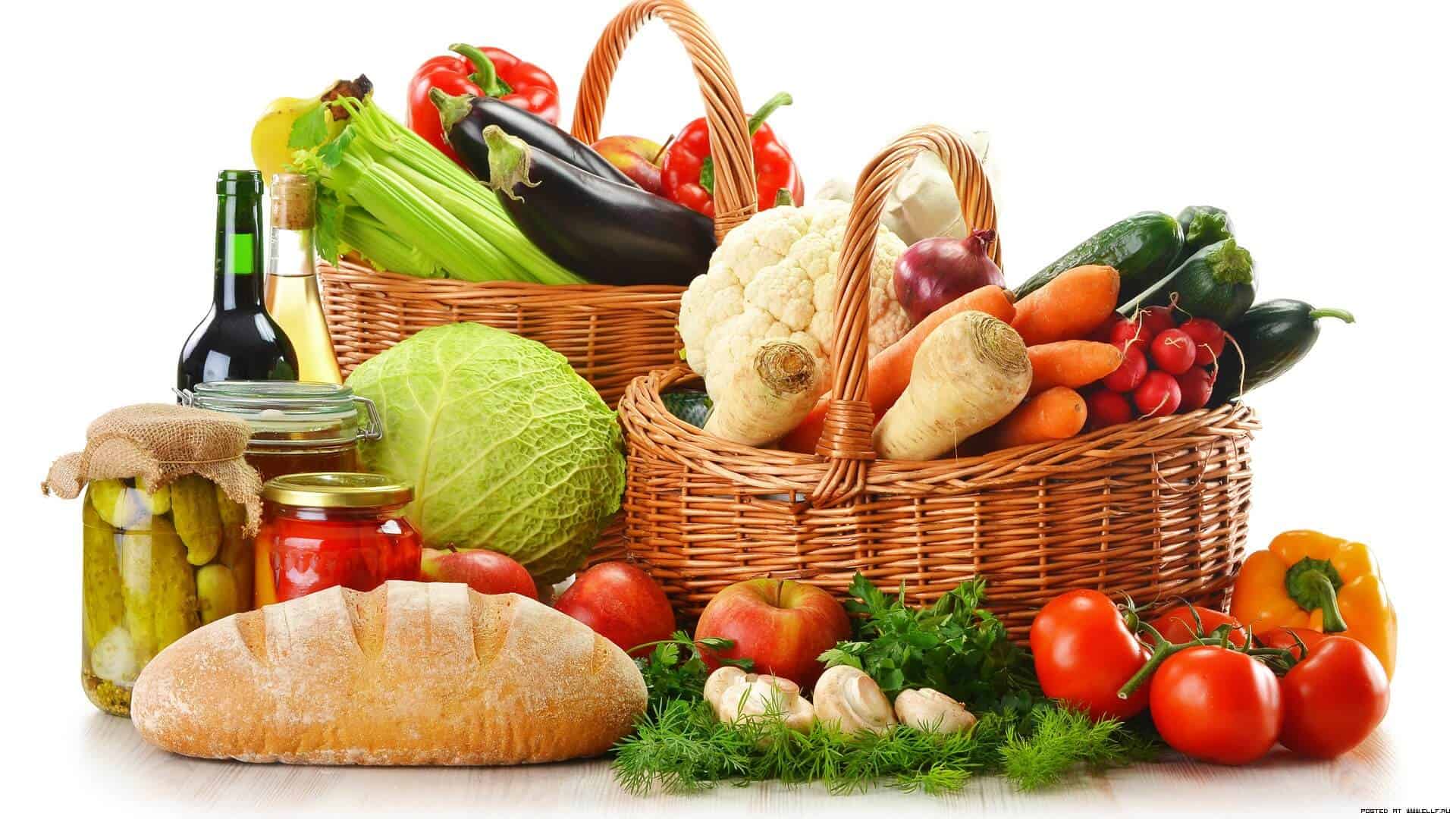 What Is a Nutrition and Healthy Eating Plan?
What Is a Nutrition and Healthy Eating Plan?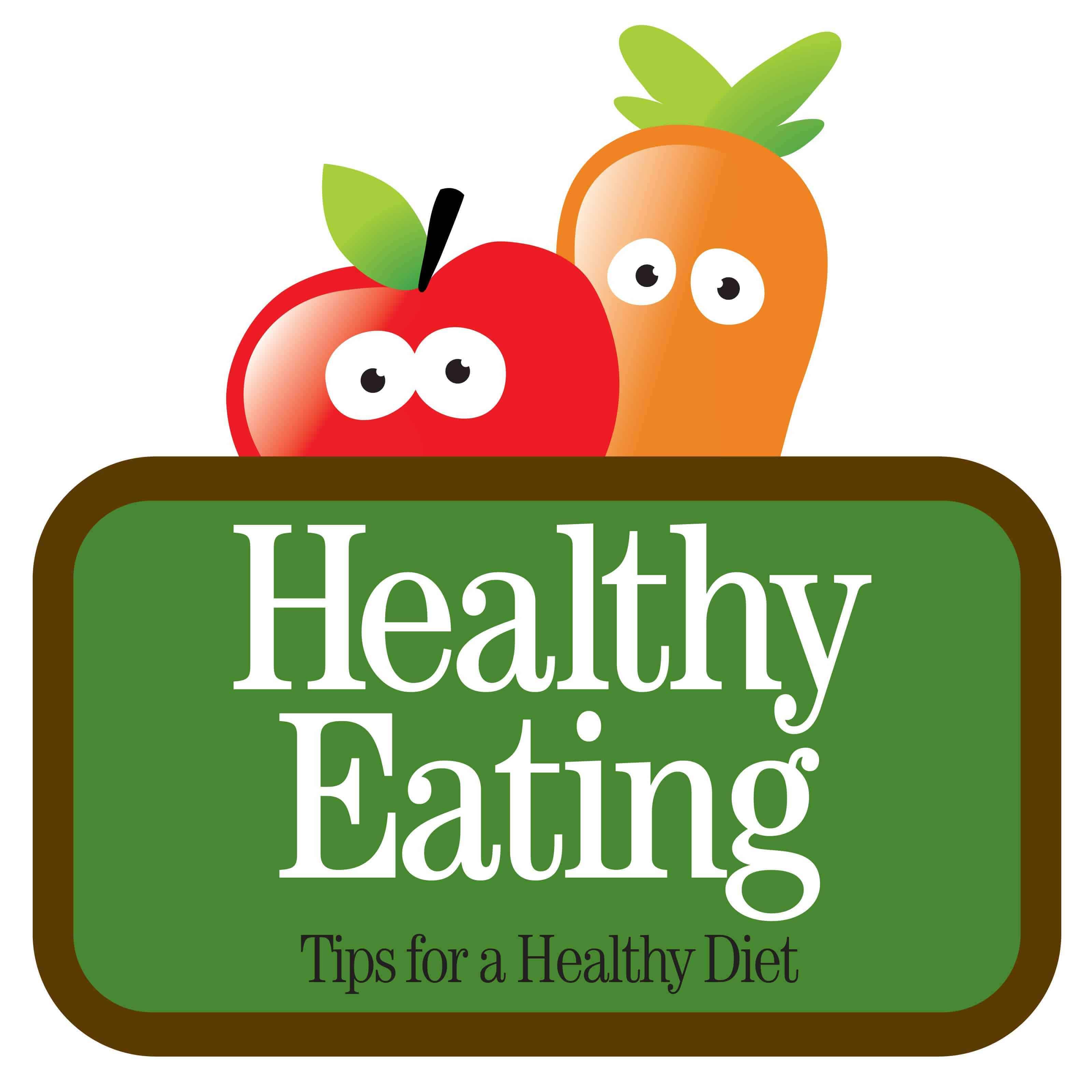
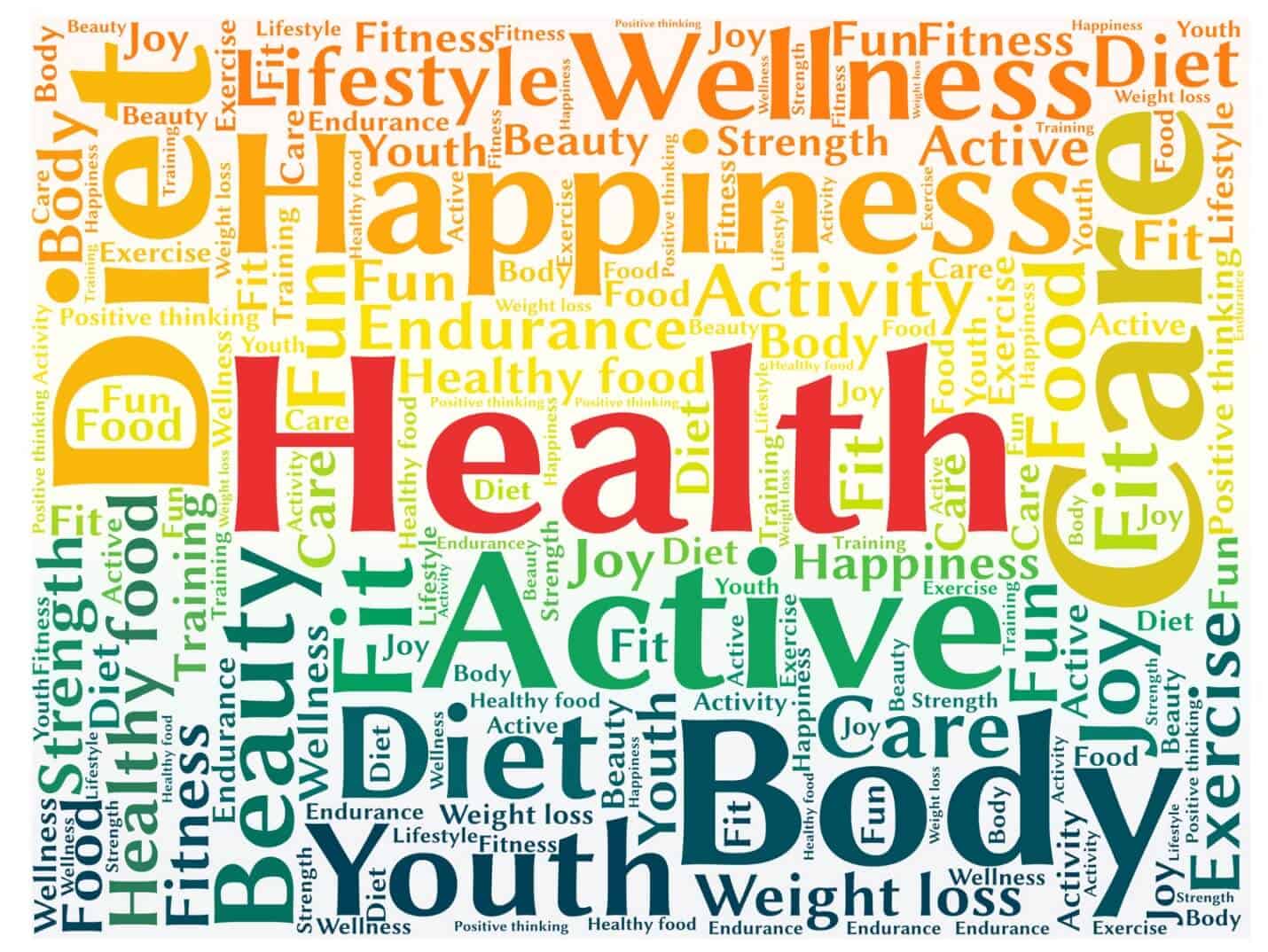 What Nutrition and Healthy Eating Plan Works?
What Nutrition and Healthy Eating Plan Works?